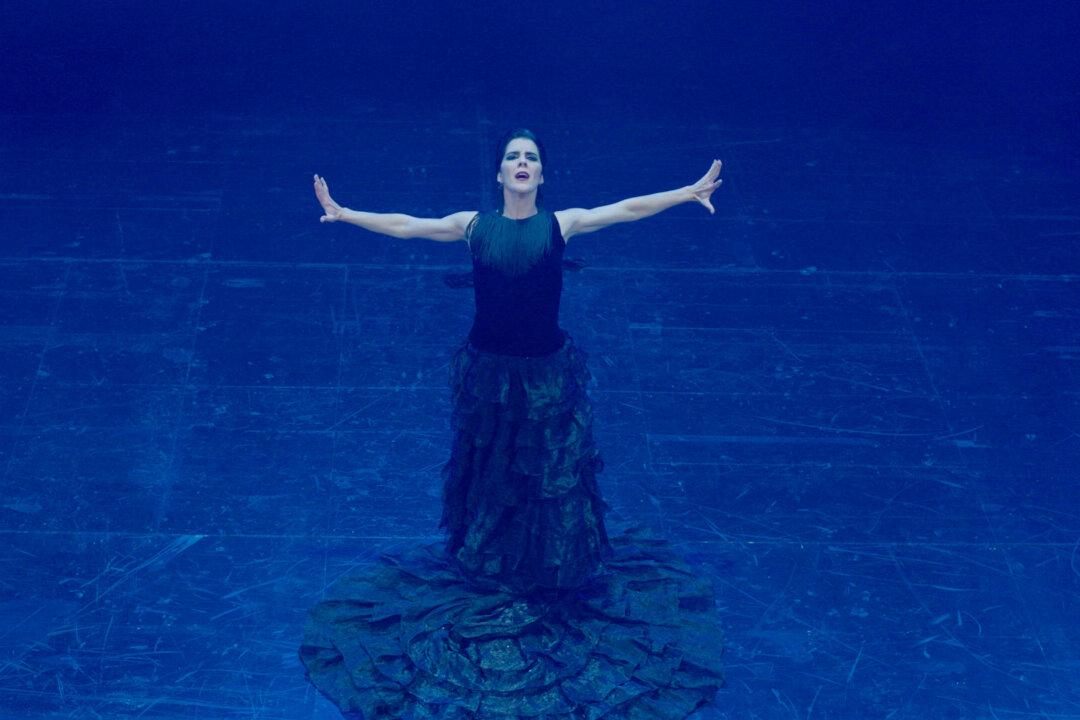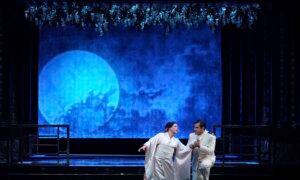Four years ago, the COVID-19 pandemic shut down just about everything that required venturing outside of your house. The performing arts were hit especially hard by the stay-at-home orders, because they were deemed non-essential extras to basic human survival. They also were one of the last business sectors to recover, since all those people sitting in close contact with strangers seemed like a germ factory. The nearsighted mandates destroyed many companies and damaged countless artists’ careers. Four years down the road, they are still trying to figure out how to rebuild the audience and heal some lasting damage that was done, both economically and artistically.
About the Piece
“The Five Moons of Lorca,” or “Las cinco lunas de Lorca” in Spanish, was released on Dec. 11, 2020, and was originally available for streaming for only two weeks. This piece was composed for a chorus in 2016 but was rearranged on commission by LA Opera for digital streaming. The music was composed by Gabriela Lena Frank, a California native whose compositions have been inspired by her Latin-American travels. The Spanish lyrics were written by her frequent collaborator, Pulitzer Prize-winning playwright Nilo Cruz.Describing her composition, Ms. Frank wrote, “The music gives equal importance to the piano and the voices, lending the feeling of a mini-opera. It is regal and proud, quintessentially Spanish in that way, before bursting into its full strength and power in the fiery middle, and then lyrically poignant in the dying moments of the finale. Throughout, there is virtuosity, whether suppressed or unleashed.”
The 13-minute short was filmed on the stage of the Dorothy Chandler Pavilion, LA Opera’s home theater. The filmmaker was Matthew Diamond, a choreographer and director who has worked on television and films for decades and won an Academy Award for the 1999 documentary “Dancemaker.” Recently, he has worked on live broadcasts from both the Metropolitan Opera and LA Opera.
Federico García Lorca
Gabriela Lena Frank described her inspiration for the short as follows: “Utilizing an original text by my longtime collaborator playwright Nilo Cruz, ‘Las cinco lunas de Lorca’ (The Five Moons of Lorca) lyrically describes the shooting death of dramatist Federico García Lorca (1898-1936) at the hands of Nationalist forces at the beginning of the Spanish Civil War. Hints of Spanish folksong, which García Lorca passionately championed contrary to the decree of the Franco dictatorship, are featured throughout.”Federico García Lorca was a Spanish poet and playwright. This Andalusian native is given credit for revitalizing basic strains of Spanish poetry and beginning a second Golden Age of the Spanish theater. He was a controversial figure because of his socialist political beliefs and alternative lifestyle. At the beginning of the Spanish Civil War, he was assassinated by firing squad on August 19, 1936, although the exact reason behind his arrest and assassination remains a mystery.
“Oh, night of grievance! Oh, night of torn handkerchief!
Near Granada, the poet has been taken. Near Granada, death approaches. And Lorca counts five wounded moons.
With his eyes blindfolded, he walks in a straight line. He recalls that life gallops with fire... and death with the frost.
And he must look at death as a blaze: A blast of unruly roses.
A gunshot! Another gunshot! And another...!
On a horse (Oh, such a brief night!) of black water, (Oh, such a long night!) the poet confronts (Oh, such a night without arms!) the killers (Oh, such a night without God!)
To kill a man is to know him intimately. And every night of their lives, the killers must undress the body of the dead and contemplate the infinite little stream of blood:

Message or Music?
I applaud anyone who tries to create new works in a classical art form. It’s far better to write your own opera than to corrupt someone else’s masterpiece by putting your own modern twist on it. However, I think many contemporary works are hindered from even approaching the greatness of the past by the fact that they are more concerned with a modern message than music. Social comment, social significance, and virtue signaling are valued more than great artistry when new works are being crafted, it seems.If I had seen “The Five Moons of Lorca” without knowing anything about it, I would have guessed that it was a contemporary ballet piece rather than a mini-opera. The flamenco and ballet fusion of dancing seems like the focal point of the video, while the vocal music seems merely like a musical accompaniment. I can imagine an opera or dance about the tortured poet’s life, but I don’t think this work captured his story. The cryptic Spanish words, disjunct musical bursts, and impassioned dancing don’t convey a strong, clear plot. Irene Rodríguez is an emotional performer with very vivid facial expressions and impressive strength and control in her movements. However, I wanted more motion in her choreography, which felt stagnant to me. Also, a solo female dancer and a female-sounding solo voice did little to capture the narrative spirit of the male subject, to me.
In conclusion, I think the LA Opera digital short series was a good idea. This was the first of ten entries. It was interesting, but I felt it lacked something, primarily: the right to be called an opera. It was an excellent example of dramatic cinematography, however. I look forward to seeing and reviewing the other nine digital shorts.







